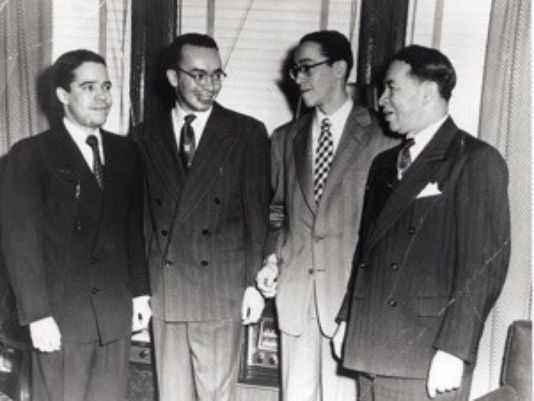 J. Ernest Wilkins Jr., left, stands with with his two brothers, John and Julian, and his father, J. Ernest Wilkins Sr, right. Just 21 when he started working on the Manhattan Project, J. Ernest Wilkins Jr. was among the brightest young minds America had on its team designing an atomic bomb. (Photo: Carolyn Wilkins)
J. Ernest Wilkins Jr., left, stands with with his two brothers, John and Julian, and his father, J. Ernest Wilkins Sr, right. Just 21 when he started working on the Manhattan Project, J. Ernest Wilkins Jr. was among the brightest young minds America had on its team designing an atomic bomb. (Photo: Carolyn Wilkins)
Adolf Hitler's quest to build a master race drove European scientific talent into the United States' ranks, giving the nation a jump-start on the race to develop the first atomic bomb.
But even as the United States held its arms open to immigrating scientists, many persecuted Jews, it constrained African-Americans who wanted to commit their talents to the war effort.
Nowhere was this more evident than in Oak Ridge, constructed in the segregated South after President Franklin D. Roosevelt authorized the Manhattan Project in 1942.
Read more at our news partner's website, knoxnews.com.
